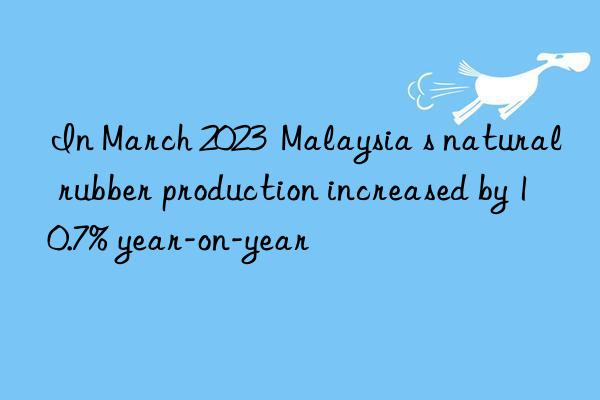
According to the Malaysian Bureau of Statistics on May 9, the export volume of natural rubber in March 2023 decreased by 14.1% year-on-year to 45,789 tons, and decreased by 5.4% month-on-month. Among them, 50.8% were exported to China, followed by Germany 14.7%, Turkey 4.2%, Pakistan 2.4%, and Egypt 1.7%.
In March, Malaysia imported 97,794 tons of natural rubber, down 17% year-on-year and up 5.3% month-on-month. Standard rubber, concentrated latex, and natural rubber in other shapes are the main import categories, and their main import sources are Thailand, Côte d'Ivoire, the Philippines, and Myanmar.
The total output of natural rubber that can be monitored in March was 27,188 tons, an increase of 10.7% year-on-year and a decrease of 0.1% month-on-month. Among them, the production of small gardens accounted for 88%, and the production of state-owned plantations accounted for 12%.
In March, Malaysia's natural rubber inventory was 203,372 tons, an increase of 6.3% month-on-month and a decrease of 34.9% year-on-year. Among them, 91.1% of the inventory is concentrated in the hands of rubber processors, the downstream terminal inventory accounts for 8.8%, and the inventory of large planters accounts for 0.1%.
In March, total domestic natural rubber consumption decreased by 38.3% year-on-year to 27,530 tons, and decreased by 2.4% month-on-month. The latex glove industry is still the main force of natural rubber consumption in Malaysia, accounting for 70.4% of consumption, 9% of tire and hose consumption, 9.2% of rubber thread, and 11.4% of other industries.
Data for the first quarter of 2023 showed that natural rubber production fell by 7.2% to 83,848 tonnes compared with 90,399 tonnes in the fourth quarter of 2022. This is down 17% from 101,045 tonnes in the first quarter of 2022.



 微信扫一扫打赏
微信扫一扫打赏
